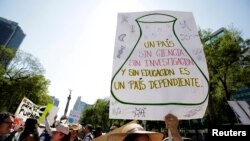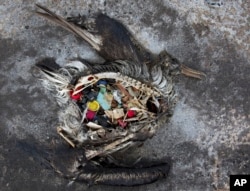Each year on April 22, many people stop to think about the health of the world environment, as as if it were a New Year's Day for nature, many make resolutions to treat the world around them more responsibly.
The day first celebrated in 1970 is approaching a half-century of existence with a movement that started in the United States and spread around the world. People celebrate the day with environmental action such as natural area cleanups, public demonstrations, tree plantings and, in 2016, the signing of the international Paris climate agreement, which aims to keep climate change in check.
The theme for 2018 is plastic pollution. Experts say a large mass of discarded plastic that has gathered in the Pacific Ocean, known as the Great Pacific Garbage Patch, has grown to more than 600,000 square miles — more than 155 million hectares (600,000 square miles), or twice the size of the U.S. state of Texas.
The patch developed in less than 100 years, as plastics have been in common use only since the 1950s. It is one of several masses of refuse found in the world's oceans, brought together by weather patterns and water currents. Experts say many types of plastic that do not biodegrade can remain in the environment for up to 2,000 years.
This year's Earth Day focuses on getting rid of single-use plastics, promoting the using of alternative materials, recycling and developing more responsible behaviors concerning the use of plastics.
The environmental group behind Earth Day, the Earth Day Network, estimates that 1 billion people around the world recognize Earth Day in some way.








